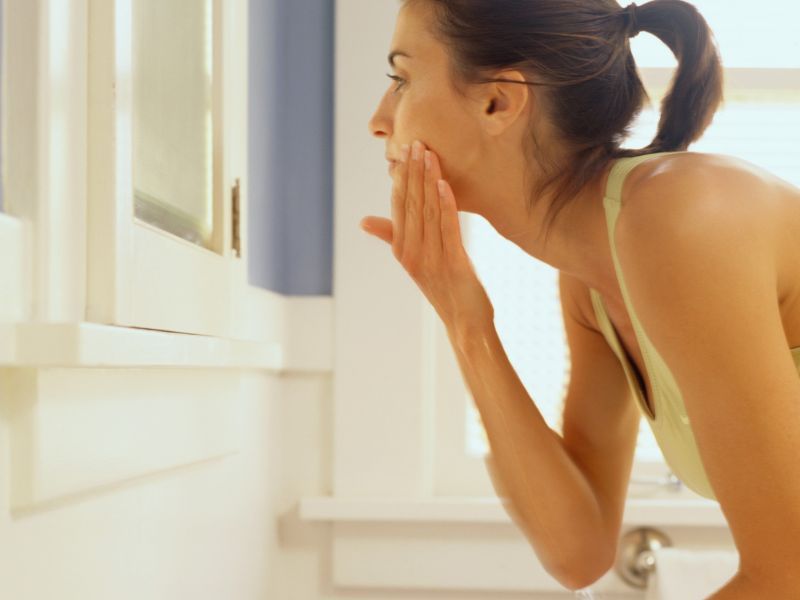MONDAY, April 12, 2021 (HealthDay News) — Once you’ve landed that coveted coronavirus vaccine appointment, you’ll likely have to fill out a form on your medical history and whether you’re allergic to any of the vaccine’s ingredients. But there could be another question waiting for you: Have you ever had dermal filler injections?
That’s because — in rare cases — people who’ve had the face-plumping injections can develop a mild, temporary swelling at the site of the filler after getting their shots.
Still, there’s no reason to panic, experts say, because such a reaction does not mean the vaccines aren’t safe. Barring any allergies or other medical reasons to avoid vaccination, people with fillers can and should get vaccinated, according to the U.S. Centers for Disease Control and Prevention.
“Lots of people get facial fillers, and the likelihood of developing this kind of a reaction to the vaccine is exceptionally rare,” said Dr. Esther Freeman, director of Global Health Dermatology at Massachusetts General Hospital, in Boston. “So, this does not mean that everybody who gets facial fillers will get this kind of a reaction. It’s still very unusual.”
If you are one of the unlucky few whose fillers swell up after getting vaccinated, Freeman said you should reach out to a dermatologist, who will most likely recommend antihistamines or steroids to help resolve the swelling a little bit faster.
But, “it’s really important to know that this is not life-threatening,” Freeman added.
For those who are unfamiliar, dermal fillers are used to “lift, shape, contour or plump the tissues of the face” using an injectable gel made of hyaluronic acid, which occurs naturally in the skin, said Dr. Lara Devgan, a board-certified plastic surgeon in New York City.
Cosmetic fillers are not the same as Botox, as the filler stays under the skin for an extended period while Botox is quickly absorbed after it relaxes muscles and flattens wrinkles, she explained.
And instances of delayed swelling related to dermal fillers are not the same as allergic reactions to the vaccine, which are also rare but are more serious. After receiving a COVID-19 vaccine, you’ll need to stick around for at least 15 minutes, as allergic reactions typically occur within that tight time frame.
“The reason that they have you wait after a vaccine is for what is called an immediate-type allergic reaction, which the CDC defines as an allergic reaction that happens within the first four hours after vaccination,” Freeman explained.
“And those include things like anaphylaxis and difficulty breathing. The filler reactions are not those,” she added. “They are a completely different kind of reaction that usually doesn’t start until the next day or a couple of days later. It has no ability for it to turn into anaphylaxis, which is the severe allergic reaction.”
Fears surrounding filler-related vaccine reactions first emerged in December when health officials pored over data from Moderna and Pfizer’s COVID-19 vaccine trials. The data revealed that three people who had cosmetic filler injections in their face saw their filler area swell up temporarily, approximately one to two days after getting the Moderna vaccine.
Dermatologists like Devgan began fielding calls from concerned patients whose fears of filler-related swelling were so great that they considered refusing the vaccine.
There were no other reports of filler-related swelling in the vaccine trials, other than these three instances that occurred out of the over 15,000 people enrolled in the Moderna trial. Pfizer and Johnson & Johnson’s vaccines (the other vaccines currently authorized in the United States) reported no such reactions in their trials.
Since December, Freeman and a group of dermatologists across the United States have been collecting reports of skin reactions that have occurred following vaccination with either Moderna or Pfizer’s mRNA vaccines.
The team published a paper in the April 7 issue of the Journal of the American Academy of Dermatology detailing 414 patients who reported one or more vaccine-related skin reactions between December 2020 and February 2021, including nine reports of swelling at the site of cosmetic fillers. Three of the nine occurred after the first dose of the Moderna vaccine, five after the second Moderna dose, and one after the second Pfizer dose. The Johnson & Johnson vaccine was not included in their data, as it was not yet authorized for emergency use when the study began.
Similar skin reactions have been reported after other vaccines like the flu vaccine and even after other viral illnesses, experts said.
“We also have patients who report swelling for a day or two when they get a flu shot, when they eat salty food, after being in a sauna or steam room, or when they participate in any activity that gives them a little bit of diffuse inflammation,” Devgan noted.
“I think people have realized that the COVID vaccine is very important from a public health standpoint, and that some of the early fears about filler reactions have been quelled by good reporting and have been placed in a broader context,” Devgan said. “I think most of the patients that I’m talking to understand the cost-benefit analysis of the vaccine versus a possible transient swelling around injectable fillers. In that question, the vaccine wins.”
More information
Visit the U.S. Centers for Disease Control and Prevention for more on coronavirus vaccines.
SOURCES: Esther Freeman, MD, board-certified dermatologist, director, Global Health Dermatology, Massachusetts General Hospital, Boston; Lara Devgan, MD, board-certified plastic surgeon, New York City; Journal of the American Academy of Dermatology, April 7, 2021
Copyright © 2025 HealthDay. All rights reserved.

